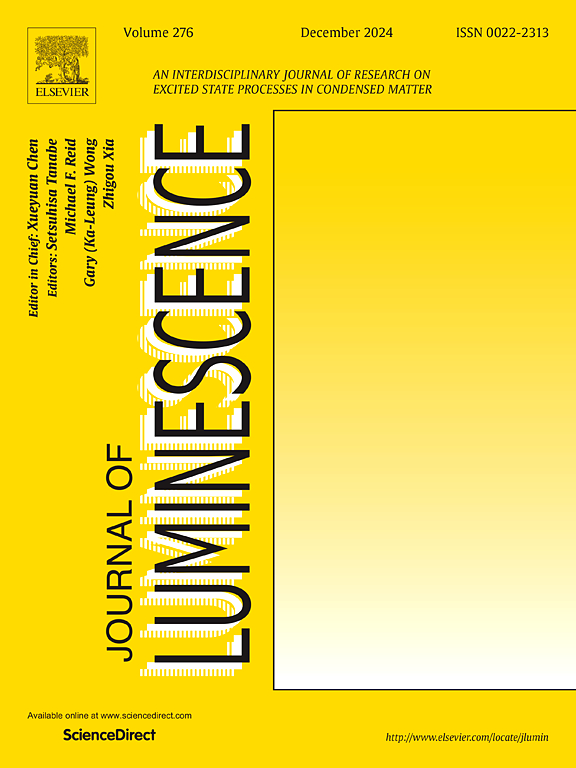Laser absorption characteristics and energydeposition patterns of CL-20 explosives
IF 3.6
3区 物理与天体物理
Q2 OPTICS
引用次数: 0
Abstract
In order to explore the energy absorption mechanism of femtosecond laser in explosives, the electronic structures, linear and nonlinear optical parameters of five crystal forms of CL-20 molecules (α, β, ε, ξ, and γ) were systematically calculated under laser irradiation based on density functional theory and vibrational frequency analysis in this study. The corresponding ultraviolet–visible (UV) and infrared (IR) absorption spectrum characteristics and laser energy deposition patterns were revealed. The results indicated that single-photon energy level transitions and molecular resonance absorption were not the primary photon absorption mechanisms of CL-20 explosives under laser irradiation (with wavelength ranging from 300 to 1200 nm). The reflection coefficient R and linear absorption coefficient α of explosives were related to the parameters such as crystal form and laser wavelength. Under lasers irradiation with wavelength range from 200 to 250 nm, the only significant single-photon absorption was exhibited in five crystal forms of CL-20 molecules (α, β, ε, ξ, and γ). The corresponding linear absorption coefficients were ranked in descending order as γ-CL-20, α-CL-20, ξ-CL-20, β-CL-20, ε-CL-20, respectively, which was ranked in the opposite order with predicted ablation thresholds. However, under femtosecond lasers irradiation with wavelength range from 400 to 500 nm and from 650 to 750 nm, the obvious two-photon, three-photon absorption and weaker single-photon absorption were exhibited in five crystal forms of CL-20 explosives, respectively. In addition, the multiphoton nonlinear absorption effect of explosives varied significantly with laser power density, while total absorption coefficient A(I) and multiphoton absorption capacity were positively correlated with laser power density.
CL-20炸药的激光吸收特性及能量沉积模式
为了探索飞秒激光在炸药中的能量吸收机理,本研究基于密度泛函理论和振动频率分析,系统计算了激光照射下CL-20分子(α、β、ε、ξ、γ)五种晶型的电子结构、线性和非线性光学参数。揭示了相应的紫外-可见(UV)和红外(IR)吸收光谱特征和激光能量沉积模式。结果表明,在300 ~ 1200 nm激光照射下,单光子能级跃迁和分子共振吸收不是CL-20炸药的主要光子吸收机制。炸药的反射系数R和线性吸收系数α与晶体形态、激光波长等参数有关。在波长为200 ~ 250 nm的激光照射下,CL-20分子的α、β、ε、ξ和γ等5种晶型均有明显的单光子吸收。相应的线性吸收系数由高到低依次为γ-CL-20、α-CL-20、ξ-CL-20、β-CL-20、ε-CL-20,与预测烧蚀阈值排序相反。而在400 ~ 500 nm和650 ~ 750 nm波长的飞秒激光照射下,CL-20炸药的5种晶型分别表现出明显的双光子吸收、三光子吸收和较弱的单光子吸收。此外,炸药的多光子非线性吸收效应随激光功率密度变化显著,总吸收系数A(I)和多光子吸收容量与激光功率密度呈正相关。
本文章由计算机程序翻译,如有差异,请以英文原文为准。
求助全文
约1分钟内获得全文
求助全文
来源期刊

Journal of Luminescence
物理-光学
CiteScore
6.70
自引率
13.90%
发文量
850
审稿时长
3.8 months
期刊介绍:
The purpose of the Journal of Luminescence is to provide a means of communication between scientists in different disciplines who share a common interest in the electronic excited states of molecular, ionic and covalent systems, whether crystalline, amorphous, or liquid.
We invite original papers and reviews on such subjects as: exciton and polariton dynamics, dynamics of localized excited states, energy and charge transport in ordered and disordered systems, radiative and non-radiative recombination, relaxation processes, vibronic interactions in electronic excited states, photochemistry in condensed systems, excited state resonance, double resonance, spin dynamics, selective excitation spectroscopy, hole burning, coherent processes in excited states, (e.g. coherent optical transients, photon echoes, transient gratings), multiphoton processes, optical bistability, photochromism, and new techniques for the study of excited states. This list is not intended to be exhaustive. Papers in the traditional areas of optical spectroscopy (absorption, MCD, luminescence, Raman scattering) are welcome. Papers on applications (phosphors, scintillators, electro- and cathodo-luminescence, radiography, bioimaging, solar energy, energy conversion, etc.) are also welcome if they present results of scientific, rather than only technological interest. However, papers containing purely theoretical results, not related to phenomena in the excited states, as well as papers using luminescence spectroscopy to perform routine analytical chemistry or biochemistry procedures, are outside the scope of the journal. Some exceptions will be possible at the discretion of the editors.
 求助内容:
求助内容: 应助结果提醒方式:
应助结果提醒方式:


